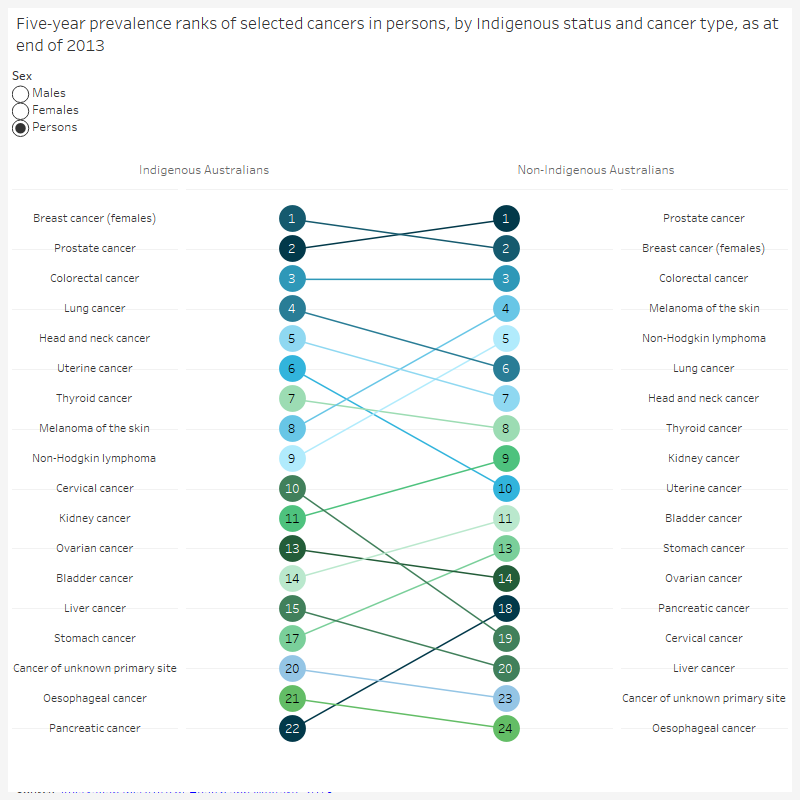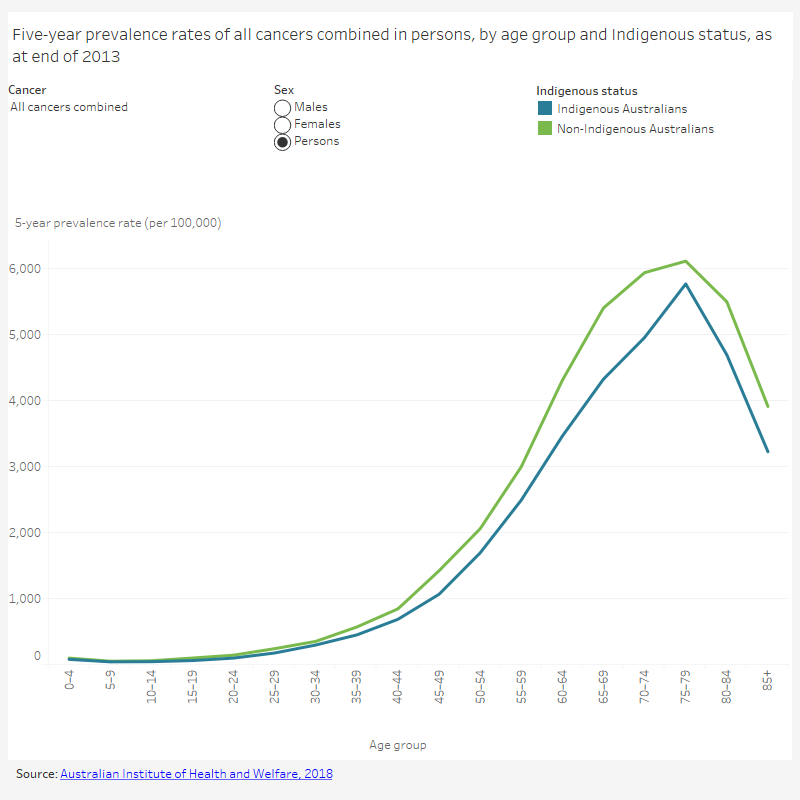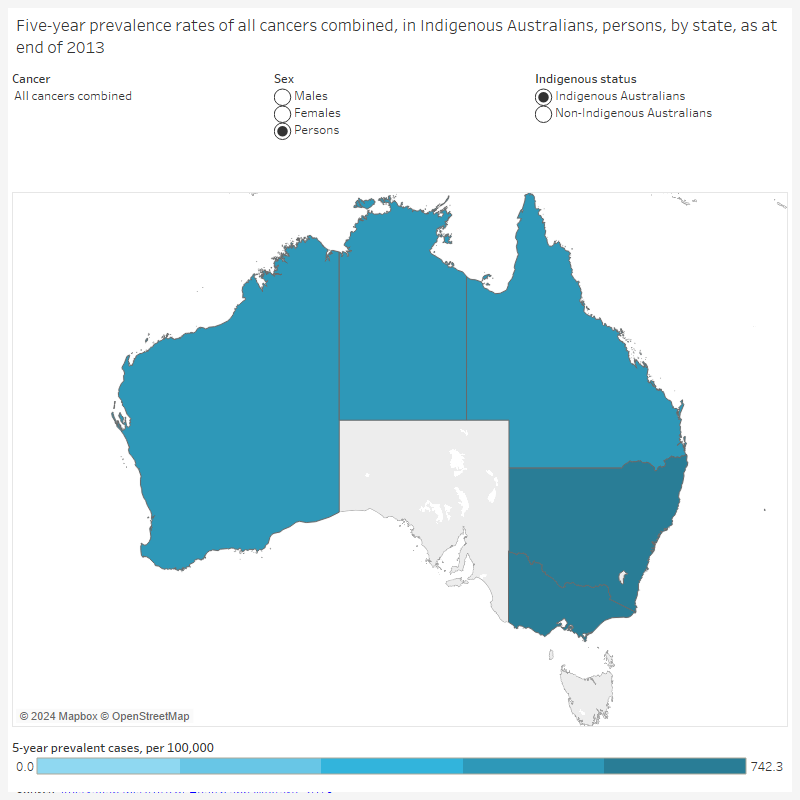Prevalence
At the end of 2013, 3,626 Indigenous Australians were alive who had been diagnosed with cancer in the previous five years. The five-year prevalence rate was lower for Indigenous Australians than non-Indigenous Australians (590 per 100,000 for Indigenous Australians compared to 1,604 per 100,000 for non-Indigenous Australians). This may be due to lower survival rates and higher mortality rates for Indigenous Australians.
At the end of 2013, for Indigenous Australians, the highest five-year prevalence rate was for breast cancer (in females), followed by prostate cancer, colorectal cancer and lung cancer. For non-Indigenous Australians, the highest five-year prevalence rate was for prostate cancer, followed by breast cancer (in females), colorectal cancer and lung cancer.
Explore the data below for information on five-year prevalence by cancer type, sex and Indigenous status.

Age group
At the end of 2013, the age-specific five-year prevalence rate for all cancers combined increased with increasing age, until age group 75-79 for both Indigenous and non-Indigenous Australians, before decreasing in older age groups.
Explore the data below for information on five-year prevalence by cancer type, sex, Indigenous status and age group.

State and territory
At the end of 2013, for the jurisdictions for which data were available (see Summary or Notes section for details), the age-standardised five-year prevalence rate for all cancers combined ranged from 473 per 100,000 to 742 per 100,000 for Indigenous Australians. For non-Indigenous Australians, the five-year prevalence rate ranged from 1,213 per 100,000 to 1,669 per 100,000.
Observed differences may be due to differences in population characteristics, for example, Indigenous Australians are more likely to live in remote areas of Australia than non-Indigenous people.
Explore the data below for information on five-year prevalence by cancer type, sex, Indigenous status and state and territory.



